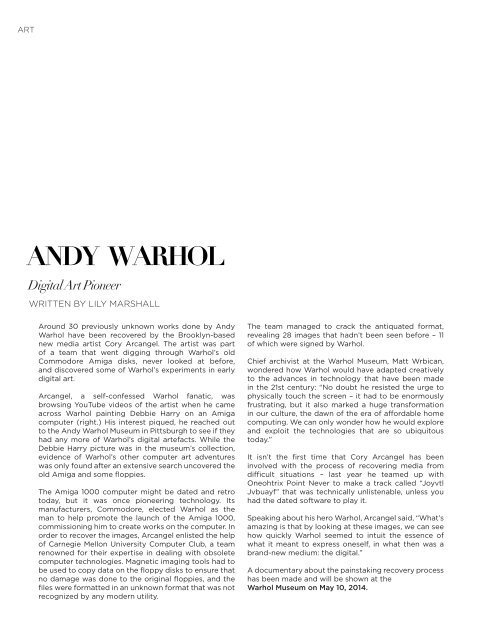FLAUNT - The Generation Issue
FLAUNT is the American fashion, culture magazine. The featured FLAUNT issue, themed as "The Generation Issue", narrates the idiosyncrasies of our current Y Generation from the digital age to our cultural icons. Compassing how we are being consumed by technology and regressing from it. This publication was created as a collaborative project for a Current Trends and Forecasting class at the Savannah College of Art and Design. It is a reproduction of our own FLAUNT magazine and is not an official FLAUNT publication.
FLAUNT is the American fashion, culture magazine.
The featured FLAUNT issue, themed as "The Generation Issue", narrates the idiosyncrasies of our current Y Generation from the digital age to our cultural icons. Compassing how we are being consumed by technology and regressing from it.
This publication was created as a collaborative project for a Current Trends and Forecasting class at the Savannah College of Art and Design. It is a reproduction of our own FLAUNT magazine and is not an official FLAUNT publication.
You also want an ePaper? Increase the reach of your titles
YUMPU automatically turns print PDFs into web optimized ePapers that Google loves.
ART<br />
ANDY WARHOL<br />
Digital Art Pioneer<br />
WRITTEN BY LILY MARSHALL<br />
Around 30 previously unknown works done by Andy<br />
Warhol have been recovered by the Brooklyn-based<br />
new media artist Cory Arcangel. <strong>The</strong> artist was part<br />
of a team that went digging through Warhol’s old<br />
Commodore Amiga disks, never looked at before,<br />
and discovered some of Warhol’s experiments in early<br />
digital art.<br />
Arcangel, a self-confessed Warhol fanatic, was<br />
browsing YouTube videos of the artist when he came<br />
across Warhol painting Debbie Harry on an Amiga<br />
computer (right.) His interest piqued, he reached out<br />
to the Andy Warhol Museum in Pittsburgh to see if they<br />
had any more of Warhol’s digital artefacts. While the<br />
Debbie Harry picture was in the museum’s collection,<br />
evidence of Warhol’s other computer art adventures<br />
was only found after an extensive search uncovered the<br />
old Amiga and some floppies.<br />
<strong>The</strong> Amiga 1000 computer might be dated and retro<br />
today, but it was once pioneering technology. Its<br />
manufacturers, Commodore, elected Warhol as the<br />
man to help promote the launch of the Amiga 1000,<br />
commissioning him to create works on the computer. In<br />
order to recover the images, Arcangel enlisted the help<br />
of Carnegie Mellon University Computer Club, a team<br />
renowned for their expertise in dealing with obsolete<br />
computer technologies. Magnetic imaging tools had to<br />
be used to copy data on the floppy disks to ensure that<br />
no damage was done to the original floppies, and the<br />
files were formatted in an unknown format that was not<br />
recognized by any modern utility.<br />
<strong>The</strong> team managed to crack the antiquated format,<br />
revealing 28 images that hadn’t been seen before – 11<br />
of which were signed by Warhol.<br />
Chief archivist at the Warhol Museum, Matt Wrbican,<br />
wondered how Warhol would have adapted creatively<br />
to the advances in technology that have been made<br />
in the 21st century: “No doubt he resisted the urge to<br />
physically touch the screen – it had to be enormously<br />
frustrating, but it also marked a huge transformation<br />
in our culture, the dawn of the era of affordable home<br />
computing. We can only wonder how he would explore<br />
and exploit the technologies that are so ubiquitous<br />
today.”<br />
It isn’t the first time that Cory Arcangel has been<br />
involved with the process of recovering media from<br />
difficult situations – last year he teamed up with<br />
Oneohtrix Point Never to make a track called “Joyvtl<br />
Jvbuayf” that was technically unlistenable, unless you<br />
had the dated software to play it.<br />
Speaking about his hero Warhol, Arcangel said, “What’s<br />
amazing is that by looking at these images, we can see<br />
how quickly Warhol seemed to intuit the essence of<br />
what it meant to express oneself, in what then was a<br />
brand-new medium: the digital.”<br />
A documentary about the painstaking recovery process<br />
has been made and will be shown at the<br />
Warhol Museum on May 10, 2014.


